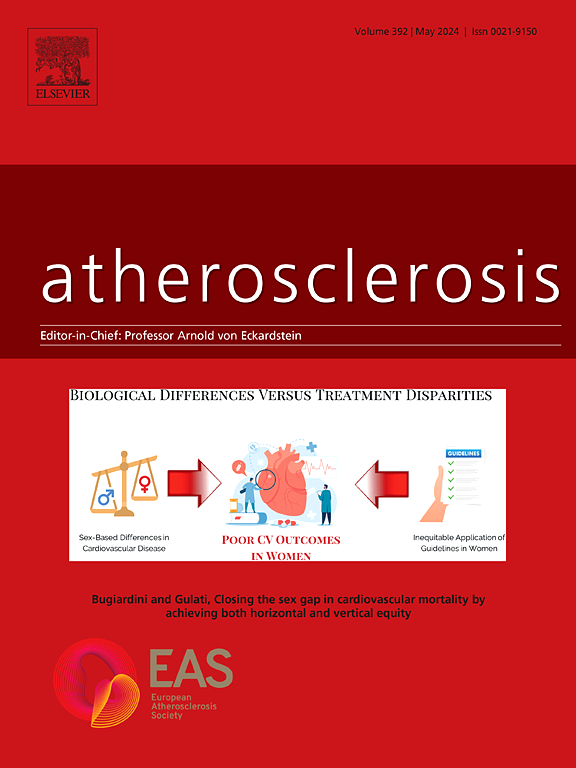Familial chylomicronemia syndrome and treatments to target hepatic APOC3 mRNA
IF 4.9
2区 医学
Q1 CARDIAC & CARDIOVASCULAR SYSTEMS
引用次数: 0
Abstract
Familial chylomicronemia syndrome (FCS) is a rare, recessive monogenic disorder characterized by severely elevated plasma triglyceride (TG) levels due to absent or markedly impaired lipoprotein lipase activity, leading to a greatly increased risk of acute pancreatitis. Naturally occurring very low levels of apoC-III are associated with low TG levels; thus, apoC-III is a target for TG lowering, and therapies have been developed to reduce apoC-III. Strategies to inhibit hepatic apoC-III synthesis include antisense oligonucleotides (ASOs) and small interfering RNAs (siRNAs). In the last decade, technologies have been developed to enhance hepatic delivery of these potential therapeutic agents by conjugation of the ligand triantennary N-acetyl galactosamine to ASO and siRNA for receptor-mediated uptake by hepatocytes, where apoC-III is predominantly expressed. Enhanced delivery of these pharmacological agents to the target tissue has been found to support lower and/or less frequent dosing with consequent lower total systemic exposure. One antisense agent, the ASO olezarsen, is now approved by the US Food and Drug Administration (FDA) as an adjunct to diet to lower triglycerides in adults with FCS, and the other, the siRNA plozasiran, is in late-stage clinical development. Both agents have shown effectiveness in reducing both apoC-III and TG levels across several study populations. Reduced TG, lower rates of acute pancreatitis events, and similar proportions of adverse events in placebo and treated patients were recently demonstrated in placebo-controlled phase 3 trials of patients with FCS treated with olezarsen in Balance and with plozasiran in PALISADE. This review discusses causes and consequences of FCS and the rationale and progress made in developing APOC3 RNA–targeted therapeutics for the treatment of FCS.

求助全文
约1分钟内获得全文
求助全文
来源期刊

Atherosclerosis
医学-外周血管病
CiteScore
9.80
自引率
3.80%
发文量
1269
审稿时长
36 days
期刊介绍:
Atherosclerosis has an open access mirror journal Atherosclerosis: X, sharing the same aims and scope, editorial team, submission system and rigorous peer review.
Atherosclerosis brings together, from all sources, papers concerned with investigation on atherosclerosis, its risk factors and clinical manifestations. Atherosclerosis covers basic and translational, clinical and population research approaches to arterial and vascular biology and disease, as well as their risk factors including: disturbances of lipid and lipoprotein metabolism, diabetes and hypertension, thrombosis, and inflammation. The Editors are interested in original or review papers dealing with the pathogenesis, environmental, genetic and epigenetic basis, diagnosis or treatment of atherosclerosis and related diseases as well as their risk factors.
 求助内容:
求助内容: 应助结果提醒方式:
应助结果提醒方式:


